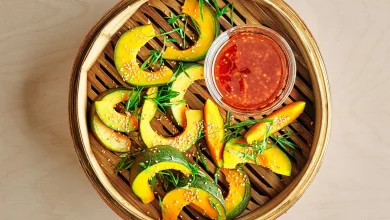Unlocking the Fiery Flavors: A Comprehensive Guide to Fermented Zhug

Introduction
Fermented Zhug, a spicy Yemeni cilantro sauce, has gained popularity for its fiery heat and aromatic flavors. This condiment, traditionally known as "sahawiq" in Yemen, has a rich history and has made its way into diverse culinary cultures. In this article, we’ll delve into the origins, preparation, and unique fermentation process that sets Fermented Zhug apart.
Contents
Origin and Evolution

Fermented Zhug, as it’s commonly known today, is derived from its Arabic name, "sahawiq." Traditionally, it was prepared by pounding herbs into a paste between two stones. The sauce traveled across borders when thousands of Yemeni Jews were airlifted to Israel between 1949 and 1950, introducing this cherished condiment to their new home. It quickly became a staple of Israeli cuisine and has now found its place in Mediterranean and Middle Eastern restaurants worldwide.
Fresh vs. Fermented
Zhug is typically enjoyed fresh, offering a bold and vivacious flavor profile. However, some enthusiasts take it a step further by fermenting the herbs and spices. This fermentation process not only adds complexity to the condiment but also intensifies its heat, transforming its vibrant green color into a deeper shade of olive.
Fermented Zhug Recipe
For those eager to explore the world of Fermented Zhug, here’s a simple recipe to get you started. The following ingredients are needed to create this flavorful condiment:
| Ingredients | Quantity |
|---|---|
| Garlic cloves | 10 large cloves |
| Cilantro leaves | 4 packed cups (about 2 large bunches) |
| Parsley leaves | 2 packed cups (about 1 large bunch) |
| Serrano or jalapeño chiles | 12, stemmed and thinly sliced |
| Kosher salt | 2 tsp. |
| Red pepper flakes | ½ tsp. (Aleppo or other dried red pepper flakes) |
| Ground cumin | 1 tsp. |
| Black pepper | 1 tsp. (freshly ground) |
| Ground coriander | 1 tsp. |
| Sumac powder | ½ tsp. |
| Ground cardamom | ¼ tsp. |
| Lime juice | 2 Tbsp. (freshly squeezed) |
Recipe Instructions
- Begin by finely mincing the garlic in a food processor.
- Add the cilantro, parsley, chiles, salt, cumin, black pepper, coriander, sumac, red pepper flakes, cardamom, and lime juice.
- Pulse the mixture to create a fine paste.
- Pack the paste into a clean 1-pint (475 ml) canning jar, ensuring a bit of headspace between the mixture and the lid. If needed, transfer the paste to a slightly larger container.
Fermented Zhug is a versatile condiment that can elevate the flavor of various dishes. Whether you enjoy it fresh or opt for the more complex, fermented version, Zhug promises a tantalizing experience for your taste buds.
In conclusion, Fermented Zhug, with its Yemeni roots and Israeli influence, is a culinary gem that has become a beloved addition to the global gastronomic scene. Its ability to evolve through fermentation adds an exciting twist to a classic recipe. So, why not try making your own Fermented Zhug and explore its bold flavors and rich history?
Remember, Fermented Zhug is not just a condiment; it’s a journey through time and culture, embodied in a flavorful sauce that ignites the senses.
Unraveling the Flavorful Mysteries of Fermented Zhug
What Makes Fermented Zhug Different from Fresh Zhug?
When comparing Fermented Zhug to its fresh counterpart, several key distinctions set them apart:
-
Flavor Evolution: Fresh Zhug is known for its bold and vivacious taste, bursting with the immediate essence of its ingredients. In contrast, Fermented Zhug undergoes a transformation through fermentation, resulting in a deeper and more complex flavor profile.
-
Enhanced Complexity: Fermentation introduces a multitude of flavors that develop over time, providing a layered experience that’s absent in fresh Zhug.
-
Intensified Heat: The fermentation process not only enhances the flavor but also brings a more entrenched heat to the sauce. This creates a more fiery and robust condiment compared to the original vibrant green version, which deepens in color to a rich olive hue.
In summary, the fermentation of herbs and spices in Zhug adds depth, complexity, and a fierier kick to the sauce, making Fermented Zhug a unique and tantalizing culinary experience.
What is Zhug Made Of?
Zhug, also spelled as "s’chug" or "s’rug," is a Yemenite hot sauce known for its bold flavors. It is typically composed of the following ingredients:
- Coriander Seeds and Leaves (Cilantro): These provide a vibrant herbaceous base.
- Cardamom: Adding a hint of spice and complexity to the sauce.
- Cumin: Enhancing the overall flavor with its earthy notes.
- Parsley: Contributing to the sauce’s freshness and aromatic qualities.
- Chile Peppers: These are the primary source of heat, infusing the sauce with its fiery kick.
This combination of ingredients results in a flavorful and spicy condiment that has become a beloved addition to various cuisines.
What is Zhug in Arabic?
Zhug goes by various names in different Arabic dialects. In Judeo-Yemenite Arabic, it’s referred to as سحوق or זחוק (IPA: [zħuːq]), and it passed into Hebrew as סְחוּג (romanized: s’ḥug). In Yemeni Arabic, it’s known as سَحاوِق (IPA: [saħaːwiq]). Additionally, in some Arabian Peninsula countries, it’s called mabooj (Arabic: معبوج).
These names all point to the same hot sauce originating from Yemeni cuisine. Zhug is celebrated for its fiery and flavorful character, known by different names across the region.
Where does Skhug sauce come from?
Skhug (pronounced skoog, also spelled zhug, skug, or zhoug) is a spiced green sauce with its origins in Yemen, but it has found widespread use throughout the Middle East. This flavorful condiment is created by blending herbs, chilies, and toasted spices, making it a cherished and versatile addition to various regional cuisines.
What is Yemeni Sauce?
Yemeni sauce, often referred to as Zhug, is a fiery green hot sauce hailing from Yemen. It is crafted from a blend of chili peppers, fresh green herbs, and a medley of aromatic seasonings. This versatile condiment can be used as a finishing touch to dishes or as a zesty condiment, adding bold flavors to a wide range of culinary creations.
What Country is Zhug from?
Zhug, a sauce designed to bring the heat, originates from the country of Yemen. While you can choose from various types of fresh chilies for its preparation, it’s essential to remember that the authentic Yemeni zhug is known for its fiery kick. This versatile sauce is perfect for spicing up sandwiches, complementing grilled meats, or enhancing the flavor of vegetable dishes.





